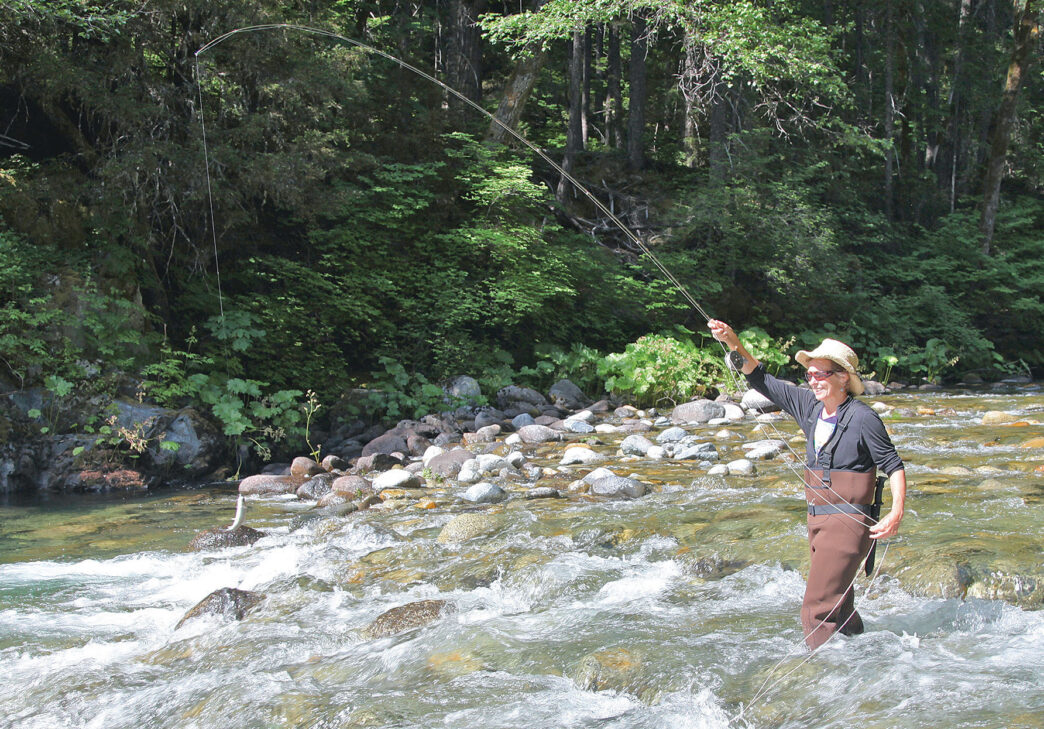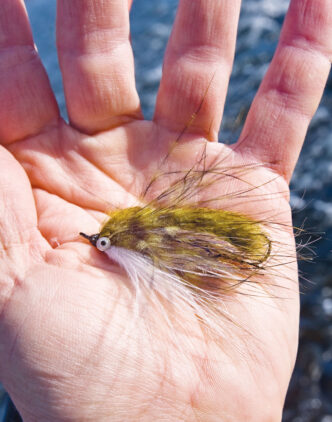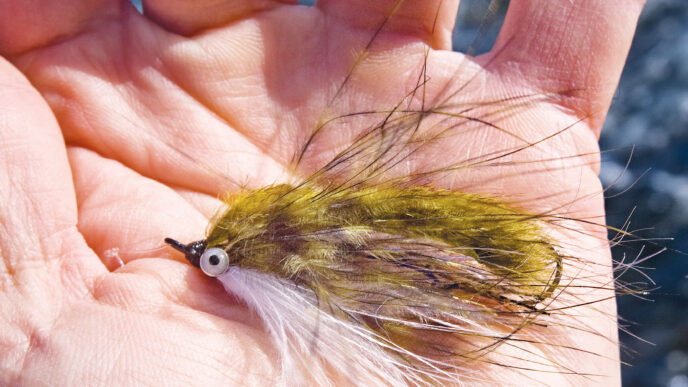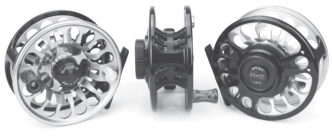Teaching someone to fly fish can be a tricky thing, but getting a beginner into a situation where there are few obstacles and a high possibility of hooking fish helps to speed up the learning curve. In California, there are lots of places where this is possible.
One such place is the Trinity Alps Recreation Area. I planned a trip there with my girlfriend, who was just learning to fly fish. There is a lot of fishable water in the Trinity Alps, and there are plenty of opportunities for camping, with many campsites within a few steps of fishable water. Towing my pram along allowed us access beyond the shoreline of the larger bodies of water.
Some of our fishing may not seem like beginner-level stuff, but it had its advantages. Fishing size 20 midges from a pram on a large lake can be intimidating for most anyone, but floating a pupa pattern under an indicator actually makes things a lot easier for a person with a limited casting range. The beginner needs to cast only as far as his or her skills will allow, then feeds line so the fly drifts naturally with the wind or current. It is a good way to present a midge pupa and can become a rewarding game of patience and concentration.
We fished dry flies on the lake the same way, casting out and letting the fly drift with the current or wind. Keep in mind that on still waters, you need to find an area of feeding fish and cast to their line of travel. Casting blind and randomly on a large body of water is not the best way to get beginners into fish.
Stream fishing is a whole different thing. Your beginner will need to learn how to read water. Some people will know intuitively where to cast their flies, while others will need guidance. Pointing out pocket water, tailouts, and likely fish-holding areas will help your friend learn. But most of us enjoy the feeling of self-discovery, so once you’ve pointed out how to identify these areas, allow your companion space for discovering and learning things on his or her own.
Stream fishing can present obstacles that you need to avoid. Dredging nymphs with split shot can be enough to deter any aspiring fly fisher, and stream banks may be lined with trees and offer little or no back-cast room. A quick lesson in roll casting will help. For this reason, I start all beginners with a double-taper line, which is easier to roll cast. Starting out fishing small streams also is a good idea. All streams have areas with tough wading, but on small tributaries and creeks, most wading is easier. Just use caution and be mindful of your beginner’s wading abilities. The trout, although usually small in these streams, are feisty, and the fishing can be interesting and fun.
Besides the fishing, an abundance of flowers, trees, birds, and insects can keep the novice interested and reaching for binoculars and guidebooks. Depending on the season, butterflies can be in abundance. Deer frequent many of the areas where anglers venture. Dogwood, ceanothus, lupine, and many other plants were in all their glory when we were in the Trinity Alps, breathtaking and beautiful.
Nothing is more discouraging to newbies than discomfort, so be prepared for the weather conditions you’ll encounter. The early spring may bring rain. Our trip in the late spring found the weather changeable, warming quickly when the sun shone, but staying cool in the shadows. Summers are hot, of course, so be prepared with hats, sunblock, and mosquito repellant. The fall will have warm days and cool evenings. The late fall can bring frost in the early mornings and possibly rain. As with any trip, check the weather forecast and prepare accordingly.
Floating lines with leaders 9 to 12 feet long on 5-weight and 6-weight rods covered all of our fishing. A 6-weight fly rod is a good choice for a beginner, because the line will mend more easily and cut through wind better than lighter lines. On the smaller streams, a shorter rod would have been more appropriate, so if you have room, bring one along. We did bring a spare fly rod, just in case if one of us broke a rod.
We kept our fly box simple. Though many other flies would also work, we did fine with this selection: Pheasant Tail Nymphs in size 16; Hare’s Ear Nymphs in size 12, 14, and 16; Bird’s Nests in the same sizes; stonefly nymphs in size 6, 8, and 10; Pale Morning Duns in size 16; and midge pupas in size 18 and 20.
I find that one of the benefits of fishing with a beginner is that I get to reconnect with the type of fishing that got me interested in fly fishing in the first place — the feeling of intimacy with nature that you get from fishing a small mountain stream or lake. Sometimes there are not a lot of fish to be caught, nor are they big, but when one is brought to hand, I am often wowed by the beauty of this small-stream native. This is what keeps me hopping rocks, casting from one pool to the next, and this is what I try to share. Fishing is the activity that gets us out into nature, but sometimes it is secondary to the smells, sounds, and sights that surround us.
Learning to fly fish can be intimidating for most beginners, but catching fish in the process will seal the deal for almost everyone. Add some beautiful scenery, and they will already be hoping for a second trip before the first trip is done.


















